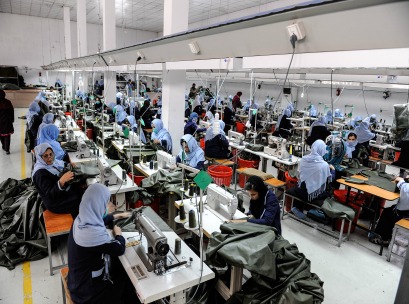
The pace of manufacturing in Australia fell 3.3 points to 49.4 in last month, the lowest result since August 2016, according to the Australian Performance of Manufacturing Index released on Monday.
The index for food and beverage, the largest manufacturing sector, was down 0.4 points from the previous month to 60.6, indicating a slower rate of expansion in June.
Some respondents said drought has slowed their sales growth and is starting to affect production levels. The input price index for food manufacturers remains high, mainly due to rising prices and reduced availability of local agricultural inputs. Capacity utilisation in the sector also remained high.
Overseas demand for Australian consumable manufactured products, such as processed food, beverages, pharmaceuticals, vitamins and cosmetics, continued to support expansion in the food and beverages and chemicals sectors.
The small but diverse textiles, clothing, footwear, paper and printing products sector fell 3.2 points to an index of 44.1, below the 12 month average of 48.2.
New orders in the segment weakened further in June, suggesting the situation could worsen over the coming months, with the textiles and clothing industry facing “especially tough local and global trading conditions” globally.
Some manufacturers attributed improved local sales in June to the end of ‘election season’ and end of financial year sales, but others reported a drop in local sales.
The food, beverages and tobacco sector produced $27.5 billion in real value-added output in the year to Q1 2019 and employed 243,000 people in May 2019, equating to 27 per cent of manufacturing employment.
“While the pace of growth has eased over the past year, the combination of the housing construction downturn, a slowing in engineering construction, continuing drought conditions and slow income growth across the broader economy caught up with the manufacturing sector and dragged it into negative territory as the financial year drew to a close,” Ai Group Chief Executive Innes Willox said.
“While production edged ahead in June, both employment and new orders were flat at best and pressure on margins intensified as sell prices eased and input costs and wages continued to rise. Manufacturers will be hoping that the combination of lower interest rates and personal income tax cuts translate into higher domestic demand over coming months. This reinforces arguments in support of the additional tax measures introduced in the last Federal Budget,” Willox said.
Of the seven activity indexes, only production and exports remained in expansion in June.
This is an edited version of a story that first appeared in Inside FMCG.





